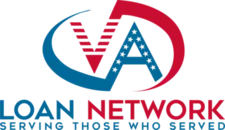Last updated on April 11th, 2025 at 05:49 pm
For many veterans and active-duty service members, buying a home is one of the most significant financial milestones.
Among the numerous mortgage options available, VA loans stand out as a popular choice due to their unique benefits, particularly the absence of private mortgage insurance (PMI).
Understanding how VA loans work and the alternatives they offer can help you save money while securing a home loan that fits your needs.
In this Article
What Is PMI?
Private mortgage insurance, or PMI, is a type of insurance required for borrowers who put less than 20% down on a conventional loan.
PMI protects the lender, not the borrower, in case the loan defaults. While PMI allows borrowers to access homeownership without a large down payment, it can significantly increase monthly costs.
For example, the typical cost of PMI ranges between 0.3% and 1.5% of the original loan amount annually. This translates to hundreds or even thousands of dollars over the life of the loan. Eliminating this cost is a game-changer for many homebuyers.
Why VA Loans Don’t Require PMI
One of the standout features of VA loans is that they do not require PMI. Instead, VA loans are backed by the U.S. Department of Veterans Affairs, which guarantees a portion of the loan. This guarantee reduces the lender’s risk, eliminating the need for private insurance.
According to Chris Manning, a VA mortgage specialist, “The VA’s guarantee is like a built-in safety net for lenders, which means veterans don’t have to shoulder the extra cost of PMI.” This unique feature allows borrowers to save money without compromising on loan terms.
The Cost Advantage of VA Loans Over Conventional Loans
To fully understand the financial benefits of avoiding PMI, let’s compare a VA loan with a conventional loan. The table below outlines potential savings:
| Loan Type | Down Payment | PMI Required? | Monthly PMI Cost (Loan of $250,000) |
|---|---|---|---|
| VA Loan | 0% | No | $0 |
| Conventional Loan | 5% | Yes | $125 – $250 |
| FHA Loan | 3.5% | Yes (MIP) | $175 – $225 |
Over a year, skipping PMI can save VA loan borrowers $1,500–$3,000 compared to conventional loans. Over the life of the loan, those savings add up significantly.
How VA Loans Offset PMI Savings
Even without PMI, VA loans include a VA funding fee. This fee is a one-time payment at closing or can be rolled into the loan amount. While the funding fee can vary depending on the borrower’s service status, down payment amount, and loan usage, it’s often a small price to pay considering the long-term savings.
Here’s a breakdown of VA funding fees for first-time borrowers:
| Down Payment | Funding Fee Percentage |
|---|---|
| 0% | 2.3% |
| 5% | 1.65% |
| 10% | 1.4% |
For a $250,000 loan with no down payment, the funding fee would amount to $5,750. While this fee might seem high upfront, the absence of PMI quickly makes up for it.
VA Loans vs. FHA Loans
Although FHA loans also cater to borrowers with lower credit scores and smaller down payments, they require both upfront and annual mortgage insurance premiums (MIP).
The upfront MIP is 1.75% of the loan amount, and the annual premium ranges from 0.45% to 1.05% of the loan balance. Comparing VA loans and FHA loans further highlights the financial advantages of choosing VA financing.
| Feature | VA Loans | FHA Loans |
|---|---|---|
| Down Payment | 0% | 3.5% |
| Mortgage Insurance | None | Upfront and Annual |
| Credit Flexibility | High | Moderate |
Additional Benefits of VA Loans
Beyond the absence of PMI, VA loans offer a range of other benefits that make them attractive to eligible borrowers:
- No Down Payment Requirement: Borrowers can finance 100% of the home’s value.
- Lower Interest Rates: VA loans often come with lower interest rates compared to conventional loans.
- Flexible Credit Requirements: VA loans accommodate borrowers with lower credit scores, making them accessible to more veterans.
- No Prepayment Penalty: Borrowers can pay off their loan early without incurring extra fees.
Together, these benefits provide financial flexibility and make VA loans a practical choice for veterans and their families.
When PMI Isn’t Avoidable
While VA loans eliminate PMI, there are certain circumstances where PMI or other insurance may still apply:
- Conventional Loans After VA Loan Entitlement Is Exhausted: If a borrower has used their full VA entitlement and cannot restore it, they might need to consider a conventional loan, which could require PMI.
- Non-Primary Residences: VA loans are primarily for primary residences. If buying a vacation or investment property, PMI may be required on other loans.
3 Key Reasons VA Loans Are Superior Without PMI
- Greater Affordability: Without PMI, borrowers save hundreds of dollars monthly, making homeownership more attainable.
- Long-Term Savings: Over the life of a loan, avoiding PMI can save tens of thousands of dollars.
- Simplified Approval Process: The VA backing reduces lender risk, which often streamlines approval for borrowers.
Michael Carter, a loan officer specializing in VA financing, emphasizes, “The absence of PMI is not just a financial perk—it’s a recognition of the sacrifices veterans have made. It’s one way to level the playing field for service members entering the housing market.”
Frequently Asked Questions
Do VA loans require PMI?
No, VA loans do not require private mortgage insurance (PMI). The VA backing eliminates the need for lenders to charge this additional cost.
What replaces PMI in a VA loan?
Instead of PMI, VA loans include a one-time funding fee. This fee helps sustain the program and allows veterans to enjoy PMI-free financing.
Can I avoid the VA funding fee?
Some borrowers, like those with service-connected disabilities, are exempt from the VA funding fee.
Are there limits to the savings from no PMI?
The savings from no PMI depend on the loan amount and interest rate. Larger loans or higher PMI rates increase the potential savings.
How does PMI compare to the VA funding fee?
While PMI is an ongoing expense, the VA funding fee is a one-time cost. Over time, the VA funding fee often saves borrowers more money.
Are VA loans better than conventional loans?
For eligible borrowers, VA loans often provide better terms due to the absence of PMI, lower rates, and no down payment requirement.
Do all VA loans eliminate PMI?
Yes, all VA loans come with the benefit of no PMI, regardless of the borrower’s credit score or down payment amount.
Can I switch from a conventional loan to a VA loan?
Yes, eligible borrowers can refinance a conventional loan into a VA loan using the VA Cash-Out Refinance program.

















